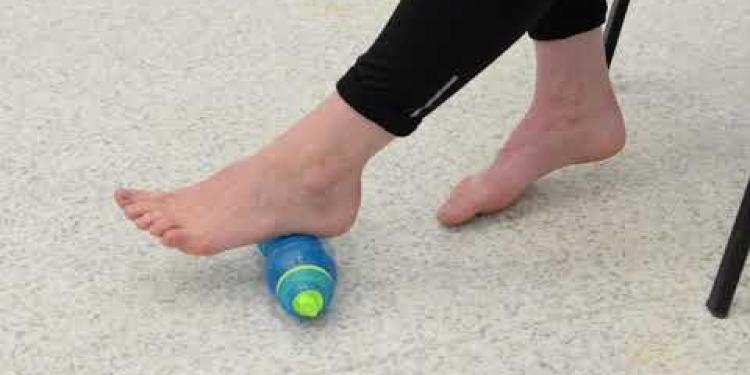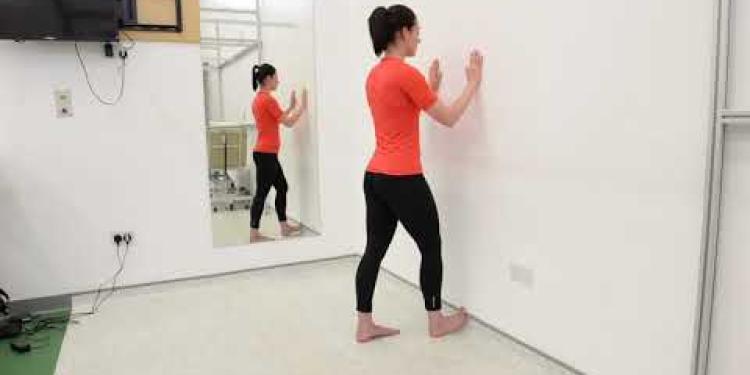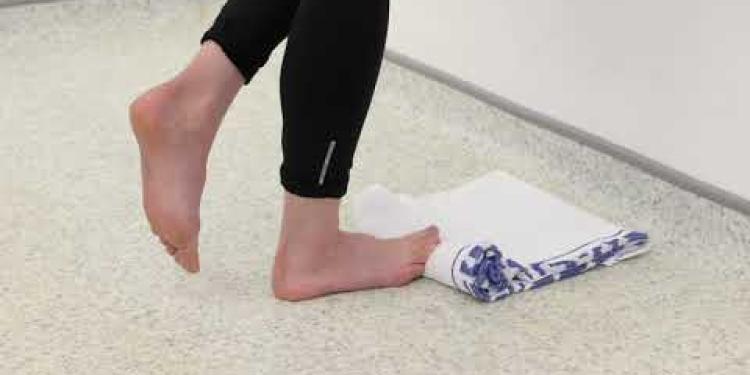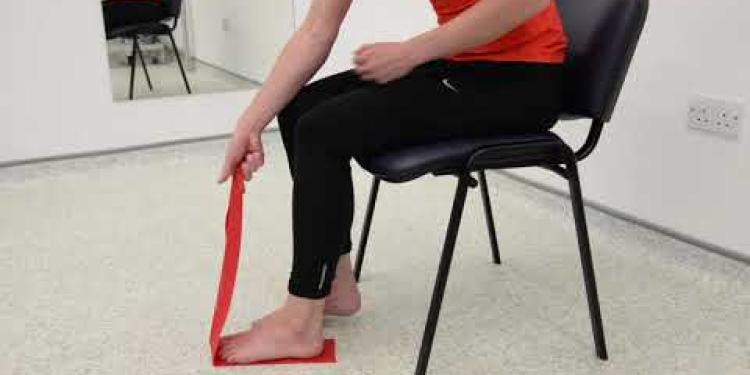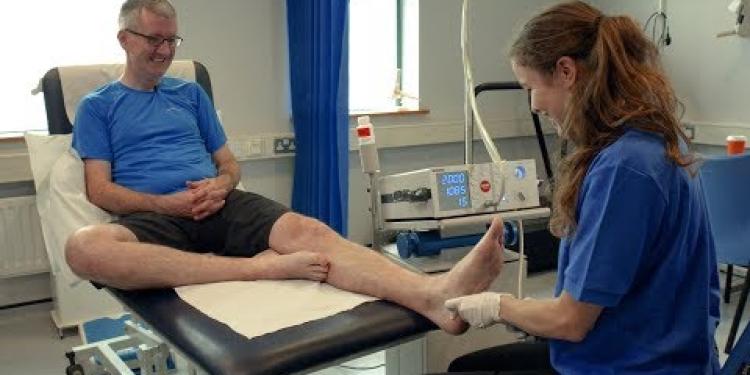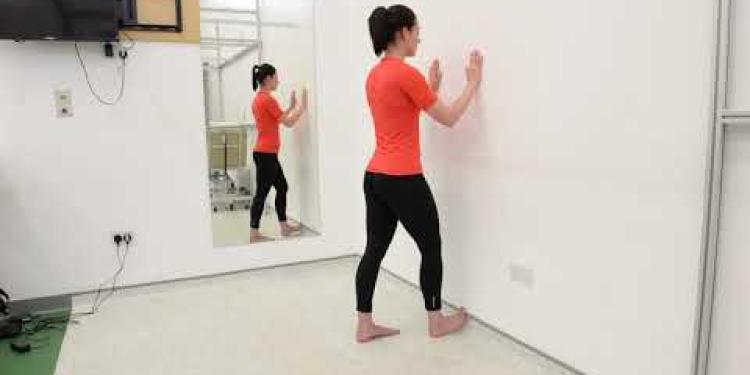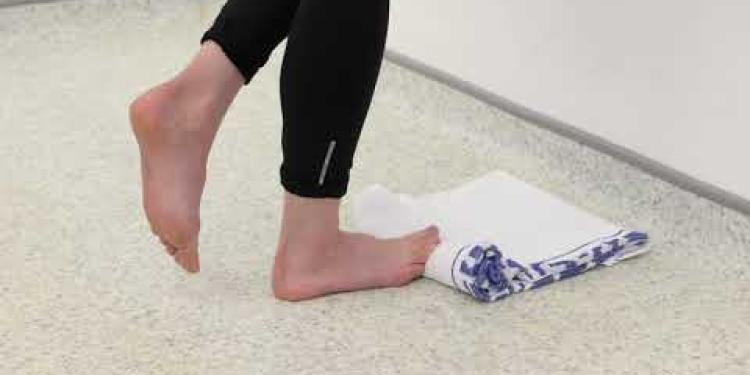Important Information On Using This Service
- Ergsy carefully checks the information in the videos we provide here.
- Videos shown by YouTube after a video has completed have NOT been reviewed by ERGSY.
- To view, click the arrow in the center of the video.
Using Subtitles and Closed Captions
- Most of the videos you find here will have subtitles and/or closed captions available.
- You may need to turn these on and choose your preferred language.
Turn Captions On or Off
- Go to the video you'd like to watch.
- If closed captions (CC) are available, settings will be visible on the bottom right of the video player.
- To turn on captions, click settings.
- To turn off captions, click settings again.
Find A Professional
More Videos of Interestdiagnosis
Plantar Fascia Cold Therapy: A Comprehensive Guide
What is Plantar Fascia?
The plantar fascia is a thick band of tissue that runs along the bottom of your foot, connecting your heel bone to your toes. It plays a critical role in foot mechanics by supporting the arch and absorbing shock. Problems with the plantar fascia, most notably plantar fasciitis, can lead to significant pain and discomfort, especially in the mornings or after prolonged periods of standing.Understanding Plantar Fasciitis
Plantar fasciitis is one of the most common causes of heel pain. It occurs when the plantar fascia becomes inflamed due to overstretching, overuse, or improper footwear. Individuals may experience a stabbing pain in the heel, which can worsen with activity. Although it can affect anyone, it is most prevalent in runners, overweight individuals, and those who frequently wear unsupportive shoes.The Role of Cold Therapy
Cold therapy, or cryotherapy, is an effective treatment for managing the pain and inflammation associated with plantar fasciitis. Applying cold packs or ice wrapped in a cloth to the affected area can reduce blood flow, numb nerve endings, and decrease swelling. This can provide immediate relief and facilitate the healing process.How to Apply Cold Therapy
In the UK, you can find a variety of cold therapy products like cold packs, gel packs, and specialised cold therapy socks. For optimal results, follow these steps: 1. Wrap a cold pack or a bag of frozen peas in a thin towel to prevent frostbite. 2. Apply it to the painful area of your foot for 15-20 minutes. 3. Remove the cold pack and allow the skin to return to normal temperature before reapplying, if necessary. 4. Repeat the process 3-4 times a day, especially after activities that strain your foot.Precautions and When to Seek Medical Advice
While cold therapy can be highly effective, it's essential to follow some precautions: - Never apply ice directly to the skin as it can cause frostbite. - Avoid prolonged exposure (more than 20 minutes) to prevent skin damage. - If you have circulatory problems or diabetes, consult with a healthcare provider before using cold therapy. If pain persists despite treatment, or if you experience signs of a more serious condition (such as severe swelling, bruising, or an inability to bear weight on the affected foot), seek medical advice promptly.Conclusion
Cold therapy offers a simple and accessible way to manage the symptoms of plantar fasciitis. By reducing pain and inflammation, it allows you to continue with daily activities while supporting the healing process. For residents in the UK, a wide range of cold therapy products are available, making it easy to find a solution that fits your needs. Always remember to follow the recommended guidelines for safe and effective treatment.Frequently Asked Questions
What is plantar fascia cold therapy?
Plantar fascia cold therapy involves applying cold treatments to the plantar fascia, which is a thick band of tissue that runs across the bottom of your foot. This therapy helps reduce inflammation and relieve pain.
How does cold therapy help with plantar fasciitis?
Cold therapy helps by numbing the affected area, reducing inflammation, and decreasing blood flow to the injured tissue which alleviates pain and muscle spasms.
How often should I apply cold therapy to my plantar fascia?
It is generally recommended to apply cold therapy to your plantar fascia for 15-20 minutes, 3-4 times a day. Always follow medical advice specific to your situation.
What are some common types of cold therapy products for plantar fascia?
Common cold therapy products for plantar fascia include ice packs, gel packs, frozen water bottles, and specially designed cold wraps.
Is it safe to apply ice directly to the skin?
No, it is not recommended to apply ice directly to the skin as it can cause frostbite. Always wrap the ice pack in a cloth or towel before applying it.
Can I use a frozen water bottle for cold therapy on my plantar fascia?
Yes, rolling a frozen water bottle under your foot can effectively provide cold therapy and help massage the plantar fascia at the same time.
What should I do if I experience increased pain during cold therapy?
If you experience increased pain during cold therapy, you should stop immediately and consult with a healthcare professional for further advice.
Can cold therapy be combined with other treatments for plantar fasciitis?
Yes, cold therapy can be combined with other treatments such as stretching exercises, orthotics, anti-inflammatory medications, and physical therapy. Always consult your healthcare provider for a comprehensive treatment plan.
How long does it take to see improvement with cold therapy for plantar fasciitis?
The relief provided by cold therapy can be immediate, but long-term improvement may take several weeks of consistent treatment, depending on the severity of the condition.
Can cold therapy cure plantar fasciitis?
Cold therapy can help manage pain and reduce inflammation, but it is typically part of a larger treatment plan rather than a standalone cure for plantar fasciitis.
Are there any side effects of using cold therapy for plantar fasciitis?
Side effects are generally minimal but may include skin irritation, frostbite, and temporary discomfort. It is important to follow guidelines to avoid these issues.
Is cold therapy suitable for everyone with plantar fasciitis?
Cold therapy is generally suitable for most people, but those with certain conditions like Raynaud's disease or poor circulation should consult a healthcare professional before use.
Should I continue cold therapy if my symptoms improve?
It's advisable to continue cold therapy for a short period even after symptoms improve to ensure the inflammation is fully reduced. Consult your healthcare provider for specific guidance.
Can I walk immediately after applying cold therapy?
It’s best to allow your foot to return to normal temperature before walking to ensure proper blood circulation and prevent further injury.
Where can I purchase cold therapy products for plantar fasciitis in the UK?
Cold therapy products for plantar fasciitis can be purchased at local pharmacies, sports stores, and online retailers in the UK.
Useful Links
Useful links from: Heel pain | NHS
- Heel Pain - NHS Comprehensive guide on heel pain including symptoms, causes, diagnosis, and treatment options provided by the NHS.
- Plantar Fasciitis - NHS Detailed information on plantar fasciitis, a common cause of heel pain. Includes symptoms, treatments, and self-care tips from the NHS.
- Versus Arthritis - Heel Pain An in-depth look at heel pain, its causes, and treatment options from the UK-based charity Versus Arthritis.
- Foot Health - NHS General information on foot problems, including heel pain, their causes, and how to prevent or treat them. Provided by the NHS.
Useful links from: Plantar fasciitis
- NHS - Plantar Fasciitis This page from the NHS provides an overview of plantar fasciitis including symptoms, causes, diagnosis, and treatment options.
- Versus Arthritis - Plantar Fasciitis Versus Arthritis offers detailed information on plantar fasciitis, including its symptoms, causes, and ways to manage the condition.
- Chartered Society of Physiotherapy - Plantar Fasciitis This resource from the Chartered Society of Physiotherapy provides evidence-based advice on managing plantar fasciitis at home and when to seek professional help.
- Health and Care Professions Council (HCPC) - Podiatry The HCPC provides insights on various podiatry conditions, including plantar fasciitis, and ways to access professional podiatric care in the UK.
Useful links from: Plantar Fascia Wall Stretch
- NHS - Foot Pain The NHS page provides comprehensive information about various causes of foot pain, including plantar fasciitis. Here, you can learn about symptoms, treatments, including exercises such as the plantar fascia wall stretch, along with other self-care tips.
- Versus Arthritis - Foot and Ankle Pain Versus Arthritis offers detailed information about pain in the feet and ankles, including conditions like plantar fasciitis. The site includes guides on managing the condition with stretching exercises and other treatments.
- NHS Inform - Plantar Fasciitis NHS Inform provides an informative guide on plantar fasciitis, covering symptoms, causes, treatments, and specific exercises like the plantar fascia wall stretch to help alleviate pain.
- Pain Concern - Plantar Fasciitis Pain Concern offers resources and information on plantar fasciitis, focusing on managing pain through treatments that include effective stretching exercises and other therapies.
Useful links from: Plantar Fascia Loading Exercise (High Load Exercise)
- NHS - Treatment for Plantar Fasciitis The NHS page on treatment for heel pain, including plantar fasciitis, provides a comprehensive overview of various treatment options including high-load exercises.
- Versus Arthritis - Plantar Fasciitis Versus Arthritis provides detailed information on plantar fasciitis, its causes, symptoms, and various treatment options including exercise recommendations.
- NHS Inform - Plantar Fasciitis NHS Inform offers information on the symptoms, causes, and treatments for plantar fasciitis. It includes advice on exercises that can help manage pain and support recovery.
- PhysioNet - Plantar Fasciitis Exercise Program PhysioNet provides an exercise program specifically designed for plantar fasciitis, including high-load exercises to help manage and alleviate symptoms.
More Videos of Interestdiagnosis
Have you found an error, or do you have a link or some information you would like to share? Please let us know using the form below.
- Ergsy carfully checks the information in the videos we provide here.
- Videos shown by Youtube after a video has completed, have NOT been reviewed by ERGSY.
- To view, click the arrow in centre of video.
- Most of the videos you find here will have subtitles and/or closed captions available.
- You may need to turn these on, and choose your preferred language.
- Go to the video you'd like to watch.
- If closed captions (CC) are available, settings will be visible on the bottom right of the video player.
- To turn on Captions, click settings .
- To turn off Captions, click settings again.
